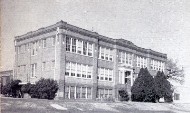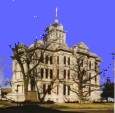Milam County Historical Commission
Milam County, Texas
Milam County, Texas






Milam soldiers fought in ill-fated battle
BY JEANNE WILLIAMS - Temple Daily Telegram
September 19, 2011
CAMERON — During the final weeks of September 150 years ago, two Milam County
companies marched into San Antonio to join Confederate Brig. Gen. Henry Hopkins
Sibley’s Brigade for an unsuccessful invasion of New Mexico that afterward was termed
The Gettysburg of the West.
One of the few Confederate Army’s offensives during the War Between the States,
Sibley’s New Mexico Campaign was destined for failure. After two major battles and some
minor skirmishes, his demoralized forces retreated to Texas.
Company D, 4th Texas Cavalry — the first group of Milam County men to join Sibley’s
Brigade — was commanded by Mexican War veteran Capt. Charles M. Lesueur, who named his
unit the “San Andres Light Horse Company” in honor of the Milam County community where
he lived.
Lesueur arrived in Texas in the early 1850s, residing first in Williamson County before
moving to San Andres, a community near Rockdale. Lesueur served as a member of the
Texas Legislature representing Milam and Williamson counties, and was a delegate to the
Secession Convention at Austin in 1861.
Capt. Charles Buckholts, lawyer and Yale University graduate, led the other unit from
Milam County to enlist in Sibley’s Brigade. His 90-man company, known as the “Milam
County Guards,” became Company E, 4th Texas Cavalry.
The companies organized by Lesueur and Buckholts were enrolled in Milam County on Sept.
7 and 9 respectively. Later in the month the units were mustered in for the war at San
Antonio.
Additionally, Capt. Willis Lang of Falls County commanded Company B, 5th Texas Cavalry,
with Capt. Hiram Mack Burrows raising the “Williamson Grays” which became Company C,
7th Texas Cavalry.
Sibley, a U.S. Military Academy graduate, was commissioned by Confederate President
Jefferson Davis to seize the New Mexico Territory, conquer the American West and
control its gold and silver mines.
Confederate troops could not be spared, so Sibley organized three regiments of more
than 3,000 volunteers, who supplied their own mounts, and weapons that consisted of
squirrel guns, bear guns, sportsman’s guns, shotguns, both single and double-barreled,
and guns of all sorts, according to accounts.
Sibley’s volunteers were expected to subsist off the land, but potential sources for
supplies were at Union outposts in New Mexico.
Some of Sibley’s men were younger than the required military age of 18. Braxton
Robinson of Milam County was only 15 when he enlisted as a bugler for Company D, 4th
Texas Cavalry, although he was listed on the muster roll as age 18.
By late October 1861, the brigade was organized and ready to start its journey to the
New Mexico territory, where Confederate forces already had established a military
presence. Lt. Col. John R. Baylor experienced some early success with his detachments
of the 2nd Texas Cavalry. However, reinforcements were needed for the campaign to
continue.
Combined forces under Sibley were known as the “Army of New Mexico.”
The Confederate Army of New Mexico departed San Antonio in October 1861 for an overland
march across the West Texas desert into New Mexico where 4,000 Union troops were
bracing to block the Confederate offensive.
Sibley’s Brigade bypassed Fort Craig and marched six miles upriver to Valverde Crossing
to block the supply line. The Confederates won the Battle of Valverde, which ended at
dark on Feb. 21, 1862.
Buckholts’ Company E joined Maj. Henry W. Raguet’s charge to divert enemy attention
while other units attacked a Union artillery battery. Lesueur’s Co. D, fighting with
Maj. Sam A. Lockridge’s troops, helped capture six Yankee cannons and turned them on
the enemy. Federal troops retreated to Fort Craig, according to published histories.
The Battle of Valverde opened the way for Confederates to march into the heart of New
Mexico, where they captured Albuquerque, seized Union supplies and marched into Santa
Fe, the territorial capitol of New Mexico.
As Sibley’s Army of New Mexico proceeded to conquer New Mexico, Union forces from
Colorado were hastily organized and marched south toward Santa Fe to stop him. The
Colorado volunteers, called Pikes Peakers, numbered about 1,350 men, and were composed
of miners, frontiersmen and Denver saloon patrons.
The Union Army scored its first victory in New Mexico at a March 26 battle at Apache
Canyon, a passage at the west end of Glorieta Pass about 20 miles from the capitol. Two
days later, fighting broke out at Glorieta Pass, a rocky, pine-covered trail at the
southern tip of the Sange de Cristo Mountains.
After six hours, the Union troops retreated, but during the fight a detachment of
federal soldiers slipped behind Confederate lines and destroyed a train of 73 supply
wagons. Under a white flag, Confederates requested a truce to collect the wounded and
bury the dead. Sibley reported 35 wounded and 33 casualties. Among them were Charles
Buckholts who “died in a hand-to-hand contest.”
Learning that more Union troops were en route, Sibley’s Brigade retreated to
Albuquerque and decided to abandon the campaign.
On April 12, 1862, the Confederates started the long, difficult retreat to Texas. After
an exhausting march through the New Mexico wilderness and West Texas, Sibley’s forces
arrived at San Antonio during the summer of 1862. Of the two companies from Milam
County that had left Texas the year before, only about 100 men returned fit for duty.
Following the campaign, Confederate Col. James Reily of the 4th Texas eulogized
Buckholts as a hero, stating that “the green laurels that he won and wore so nobly at
Valverde were reddened by his own heart’s blood at Glorieta. The county of Milam cannot
do too much to perpetuate the fame of a citizen so devoted and officer so heroic. He is
buried near the spot where, with his own hand he struck down the enemy of his own
country.”
Ultimately, the town of Buckholts was named for his brother, John Buckholts.
jwilliams@tdtnews.com
All articles from the Temple Daily Telegram are published with the permission of the
Temple Daily Telegram.
All credit for this article goes to
Jeanne Williams and the Temple Daily Telegram
Temple Daily Telegram.
All credit for this article goes to
Jeanne Williams and the Temple Daily Telegram

The grave of S.L. “Sam” Cotton of Company E 4th Texas Cavalry from Milam County is located in New Mexico near the site of the Battle of Glorieta. Cotton was among casualties in the ill-fated battle, but his remains were not discovered until an archaeological excavation unearthed graves in the late 1980s at the scene. He was identified by a ring inscribed with his initials.
.